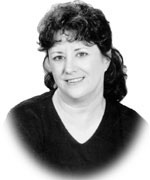 Salmon fishermen take more maketing control over catches By Laine Welch July 08, 2005
Bristol Bay has just become the second of twelve potential Alaska regions to form a state sanctioned marketing entity to promote its own seafood. "The Bristol Bay Regional Seafood Development Association has been officially certified by the state," said acting director Bob Waldrop.
The growing movement stems from a law passed last year by the Alaska legislature that allows fishermen to tax themselves based on their landings to fund such programs. The tax is collected through the state and distributed directly to the regional seafood development associations, or RSDA's. Earlier this year, drift gillnet
fishermen from the Copper River and Prince William Sound region
formed the state's first RSDA, and in May voted overwhelmingly
to authorize a self-imposed 1 percent tax. Based on historical
averages, that will provide about $200,000 annually for marketing,
which will be available to the PWS/Copper River group this fall.
The challenge now is to make more salmon fishermen aware of the potential advantages an RSDA can provide, Waldrop added. The tax money can be used for seafood sales and promotions, infrastructure development, market research, education and new product development. "Most people still don't even know about it. But once people understand what a RSDA is all about, they are very enthusiastic," he said. Fisheries specialist Glenn Haight of the state Commerce Department agreed that the concept is so new, there is very little guidance as to what a RSDA does, or how it should perform its duties. "It's based on how people think it's going to be most effective in a region. But I don't see someone creating an RSDA that isn't going to play well with those who will be taxed to fund it," he said in a previous interview. Haight added that the statutes are not clear as to whether or how other fisheries besides salmon might participate in a RSDA, although the intent is to expand the program to other species. Back in the Bay, the plan is for salmon permit holders to meet this fall to elect a 13 member board of directors for the BBRSDA, and to vote on the one percent tax. That would allow the assessment to occur for the 2006 season, and begin the marketing activities in early 2007. Bob Waldrop said he is optimistic that Bristol Bay fishermen will sign onto the new program. He added: "This is probably the first real opportunity for them to take control of their own destiny and focus on promoting products right from where their nets are fishing. As Shakespeare said, there's many a slip 'twixt the cup and the lip, and there are many directions this new venture can take. But it's off to a good start and I think it's got a lot of potential for success." Get more information about
the Bristol Bay Regional Seafood Development Association at www.bbrsda.com. Here's a sampler, starting with sockeye, or red salmon: Southeast gillnetters started at 95 cents to a $1 a pound , up a dime from last year. Ditto Southeast seiners at 92 cents . Yakutat setnet sockeye was fetching $1.75 to $2 a pound, up from 85 cents last year. Prince William Sound gillnetters were getting $1a pound, up from 70 to 95 cents. Upper Cook Inlet reds were at 90-95 cents, up from 50 to 60 cents last year. Moving west - South Peninsula fishermen were getting 60 cents for sockeye salmon, again up about a dime. Base prices for Kodiak seiners were also topping 60 cents, up from 53 cents last season. Sockeye prices were still not posted at the world's largest sockeye salmon fishery at Bristol Bay, which is typical until buyers get a feel for the strength of the run. But all reports peg the Bay sockeye price at higher than last year's 50 cent per pound average. The upward trend continues for other salmon species. Early chum prices were higher for most regions - for example, at 23 cents a pound for Southeast Alaska seiners, compared to 12 to 17 cents last year. The first chums were fetching 25 cents a pound throughout Cook Inlet, compared to 12 cents at the same time a year ago. Early cohos (silver salmon) at Upper Cook Inlet started at 40 cents, up from 20 cents last year. Some pink prices were popping up at 8 to 10 cents in Southeast and Prince William Sound, compared to about a nickel. Bear in mind that many salmon base prices get bumped up about a dime for fish delivered to the docks, and another three to five cents for fish that's well chilled. If the trend holds true, this
will be the third year in a row that Alaska's salmon catch increases
in value. Last year's statewide harvest topped $240 million,
up more than $30 million from the 2003 catch, and well above
the low point of $162 million in 2002. Finally, seafood labeling has gone to an extreme in Australia. New allergy advisory rules mean that wineries must post that their wines may contain fish products. Wine makers for centuries have used a substance called isinglass as a clarifying agent. It's obtained from the air bladders of certain fish and is said to give wine a silkier texture. The wineries are protesting the use of the fish advisory on their bottles.
Publish A Letter on SitNews Read Letters/Opinions Submit A Letter to the Editor
|
||
